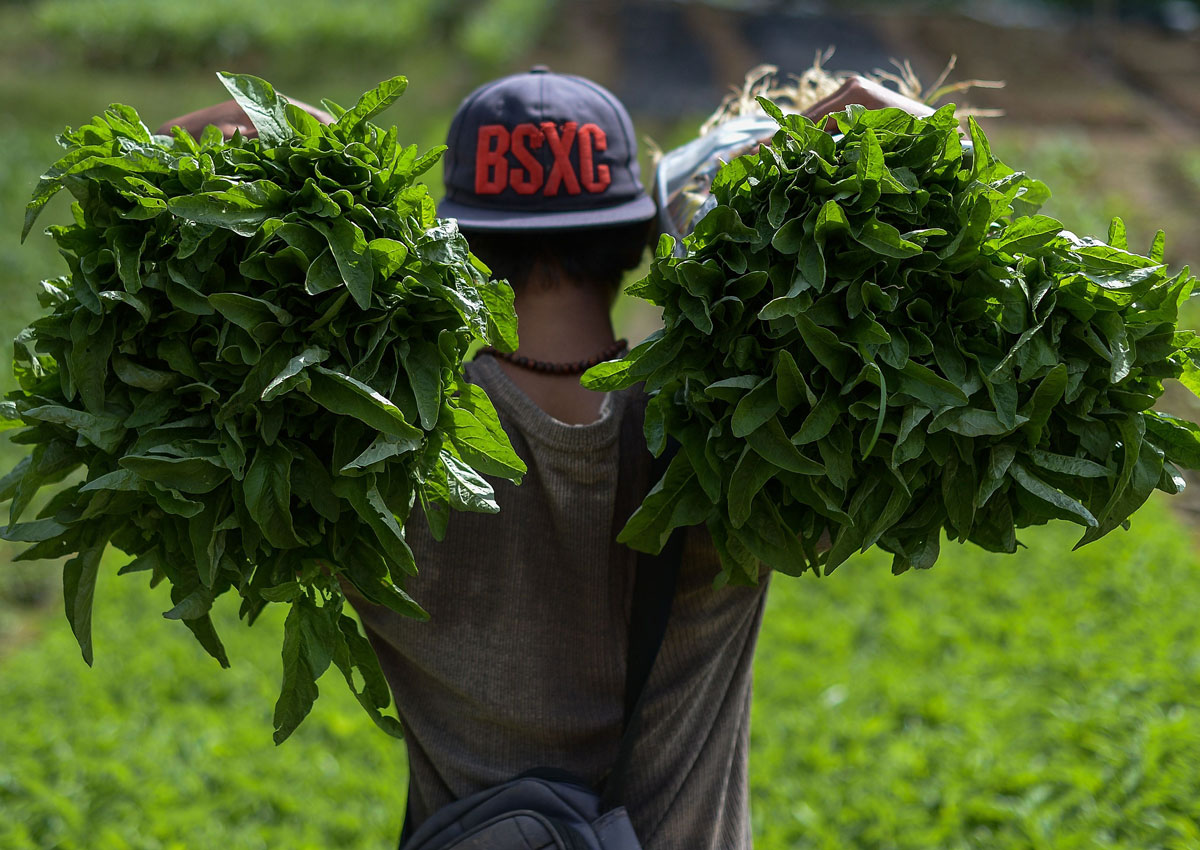The heatwave in the region has led to more costly Malaysian greens at wet markets here.
Prices of cucumbers, long beans, bittergourds and brinjals have risen by 10 per cent to 20 per cent since last week, while French beans and tomatoes now cost 30 per cent to 40 per cent more, according to Mr Jerry Tan, assistant secretary of the Singapore Fruits and Vegetables Importers and Exporters Association.
At a wet market stall in Yishun, the price of Malaysian-grown chye sim has gone up from $2.80 per kg two weeks ago to $3.50 this week. Kangkung was selling at $3.30 per kg, up from $2.50.
While Malaysia has been suffering from a dry spell for the past month – with the heatwave causing schools to be closed for two days – farms there were initially able to cope by using water from reservoirs to grow their crops, according to the association.
However, the prolonged drought has dried up reservoirs, causing production of vegetables to fall.
The growth rate of vegetables slows significantly when the temperature rises above 35 deg C, according to Mr Tai Seng Yee, executive director of Zenxin Agri-Organic Food, which has farms in Johor and Cameron Highlands.
His farms now produce around four tonnes of vegetables a day, about a 20 per cent drop from before the heatwave. However, he has yet to raise the price of his produce which is sold at Cold Storage and Giant supermarkets here.
“We continue to maintain our prices since organic vegetables are already priced at a premium,” he said.
Supermarket chains, which tend to have more bargaining power because they buy in bulk, have yet to be affected. FairPrice, Sheng Siong and Cold Storage said prices and supply of their Malaysian greens remain stable for now.
Meanwhile, prices of kai lan and chye sim from China have almost doubled from a year ago, with importers blaming the cold snap that hit the country earlier this year.
The cold can freeze crops, while rain can cause plants to rot and wither faster than usual.
Prices of China-grown garlic have gone up by about 30 per cent to 50 per cent at supermarkets here, The Straits Times reported last week.
Despite the weather woes, consumers do not have to worry that there will not be enough vegetables to go round as importers can get supplies from other countries, said Mr Tan.
“Once our stock drops below a ‘safe’ level, we will activate supply from other countries like Thailand, Vietnam, Indonesia, Australia and India,” he said.
Prices of these vegetables, however, will be higher than those of Malaysian vegetables as it costs more to transport them to Singapore.
Housewife Tee You Na, 64, said: “If I like the vegetables, I will still buy, never mind if it is more expensive.”
mellinjm@sph.com.sg

This article was first published on April 9, 2016.
Get a copy of The Straits Times or go to straitstimes.com for more stories.






